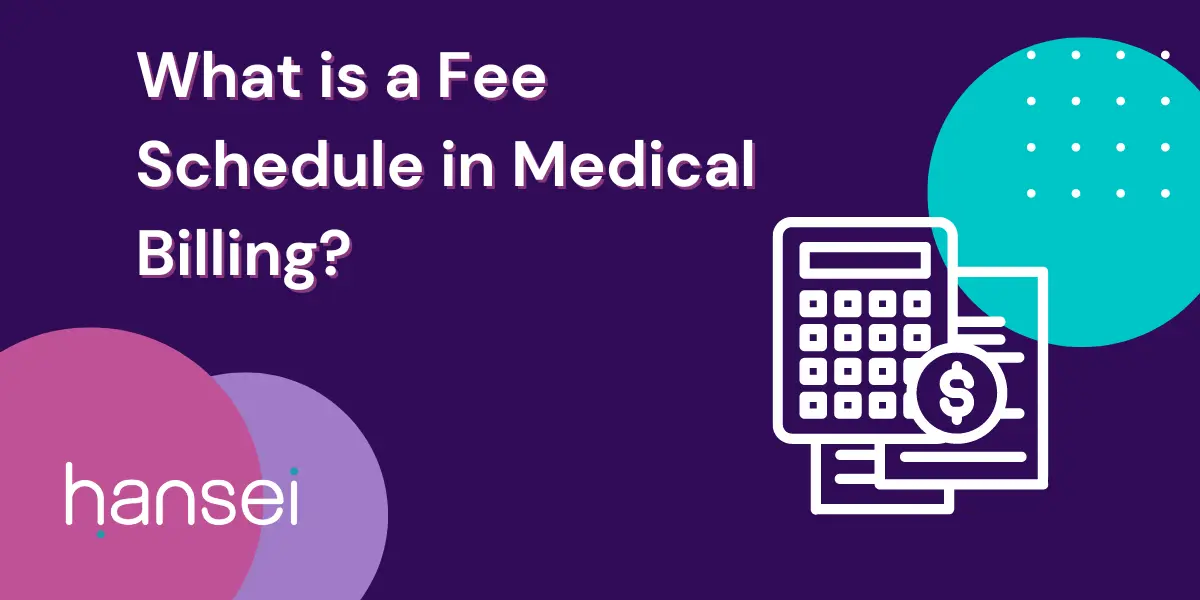Blog

In medical billing, the term “fee schedule” is important because it affects the financial side of healthcare for everyone involved—providers, insurers, and patients. The fee schedule determines how much providers get paid for their services, how insurers set their payment rates, and how patients are charged for their care.
Understanding what a fee schedule is, why it exists, and how it’s put together helps explain its impact on all these different players in the healthcare system. By looking at these aspects, we can see how crucial it is to have a fair fee schedule that balances paying providers fairly, keeping costs manageable for insurers, and making sure patients can afford their care. This balance is key to a smooth and effective healthcare billing process.
What is a Fee Schedule?
A fee schedule in medical billing is a detailed list showing the maximum amount a healthcare provider will be paid by an insurance company for specific medical services and procedures. Each service or procedure gets a unique code, usually standardized by the Current Procedural Terminology (CPT) or the Healthcare Common Procedure Coding System (HCPCS). These codes ensure consistency and accuracy in billing and reimbursement processes.

Why Do We Need Fee Schedules?
Fee schedules are created to establish a clear, standardized system for reimbursing healthcare providers. Here’s why they’re essential:
- Cost Control: Insurers use fee schedules to keep healthcare costs in check. By setting fixed rates for services, they can predict and manage expenses more effectively.
- Transparency: Patients benefit from fee schedules because they promote clear pricing in healthcare. Knowing the cost of services upfront helps patients make better-informed decisions about their care.
- Fairness: Fee schedules aim to ensure fair payment for providers, matching payments with the complexity and resource requirements of each service.
Fee schedules play an important role in creating a more predictable, transparent, and fair healthcare system for everyone involved.
How Are Fee Schedules Made?
Creating a fee schedule is a critical process because it ensures that healthcare providers are fairly compensated for their services, reflecting the true costs and complexities involved, while also maintaining consistency and accuracy in billing and reimbursement practices. The steps to effectively do this are:
- Data Collection: This starts with gathering detailed data on healthcare services, including the cost of delivering these services, regional cost differences, and historical billing information.
- Code Assignment: Each service is given a specific CPT or HCPCS code. These codes describe the procedures and services in detail, providing a standardized language for billing and reimbursement.
- Relative Value Units (RVUs): The Centers for Medicare & Medicaid Services (CMS) often use RVUs to determine the relative cost of services. RVUs consider factors like the physician’s work, practice expenses, and malpractice insurance costs.
- Conversion Factor: This is a monetary amount used to convert RVUs into actual payment amounts. The conversion factor can change annually based on economic factors and policy updates.
- Adjustments and Updates: Fee schedules are not set in stone. They are regularly updated to reflect changes in medical practice, technology, and economic conditions. Updates also address discrepancies and ensure the schedule remains fair and accurate.
Following these steps can allow you to make better decisions about your entire billing process for your organization.

Different Types of Fee Schedules
Fee schedules play a vital role in healthcare, determining the rates at which services are reimbursed by insurance companies and government programs. Different types of fee schedules exist, each tailored to specific needs and contexts within the healthcare system. There are several types of fee schedules used in medical billing, including:
- Medicare Fee Schedule: This is the most commonly referenced fee schedule, used by the CMS to reimburse providers for services rendered to Medicare beneficiaries. It serves as a benchmark for many other insurance companies.
- Commercial Insurance Fee Schedules: Private insurers create their own fee schedules, often influenced by the Medicare Fee Schedule but adjusted based on negotiated contracts with providers.
- State Medicaid Fee Schedules: Each state has its own Medicaid program with a unique fee schedule. These schedules can vary significantly from state to state.
Understanding these variations is key to navigating billing practices and ensuring appropriate compensation for healthcare services.
How Fee Schedules Impact Different People in Your Organization
Fee schedules have a significant impact across your organization, influencing everything from how administrative staff bill for services to how healthcare providers are compensated. Well-designed fee schedules are crucial for ensuring that each department operates smoothly, with clear guidelines for reimbursement. This not only supports the financial stability of the organization but also enhances the quality of care delivered to patients.
Various people within the healthcare system are affected by fee schedules in different ways. Healthcare providers depend on these schedules to determine their compensation, making them essential for financial planning and sustaining their practice. Insurance companies use fee schedules to manage costs, negotiate contracts, and set premiums, ensuring they pay fair rates for services. Patients, though indirectly impacted, experience the effects of fee schedules through their out-of-pocket expenses and the overall affordability of care. Policymakers utilize fee schedules to control healthcare spending and allocate resources effectively, enabling them to adapt to economic changes and support specific health initiatives.
Simplifying the Behavioral Health Billing Process
A fee schedule in medical billing is key to keeping healthcare costs in check, making sure providers are fairly reimbursed, and maintaining clear, transparent pricing. While it brings many benefits to providers, insurers, and patients, it also requires ongoing tweaks to stay effective. By getting a solid grasp on how fee schedules work, your organization can better navigate the often-complicated world of medical billing. If you’re looking to optimize your fee schedules and improve your billing processes, Hansei Solutions is here to help—reach out to us today!

Ready to focus on providing healthcare? Let us lighten your load.
We’re here to address your pain points and create growth opportunities for your organization. We’re passionate about what we do, and it shows in every interaction. Learn what makes us tick and schedule a demo today.